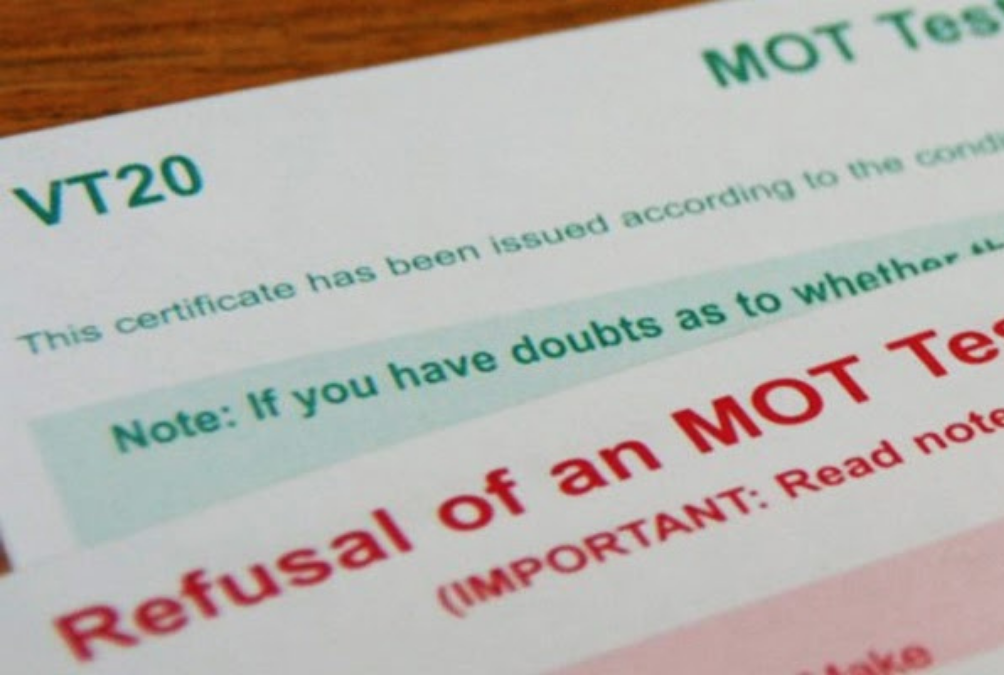
Do You Know The Top 10 MOT Failures and How to Prevent Them?
Even
the most confident and certain drivers might be terrified of their yearly MOT,
since no matter how brilliant you are, there's no assurance your car is in
equally fantastic form.
In
reality, according to figures from 2000/21, about 36% of vehicles failed
their MOT on the first attempt, equating to nearly 7.8 million tests, with the
average failure resulting from nearly three problems. Many of the faults that
caused the failures are simple to repair and could have been fixed before
the test.
We've
compiled a brief guide that outlines the most common failures. Confirm the MOT status of your vehicle and the following will help you in how to
avoid them:
1. Lights and Signalling
Blown bulbs are the
most common cause of failures, yet they're also one of the easiest and cheapest
to fix. Ask a friend to assist you in checking all of the lights - front, rear,
indicators (including side repeaters), brake lights (including centre
repeaters) and front and back fog lights before the MOT test. You might
also fail if your headlights had deflectors installed for driving in Europe
that you failed to remove. When you arrive home, double-check that they've come
off.
2. Suspension
Britain's potholed,
patchworked roads put our vehicle's suspension to the test and suspension
problems are becoming more regular, with nearly 1 in 10 tests reporting
suspension failures. There's not much you can do a pre-test to prevent a failure
short of crawling beneath the car. Instead, check MOT history and schedule your yearly service for right before the MOT test and a
trained technician can tell you.
3. Brakes
Look for a spongey
pedal feel and the car pulling to the left or right when braking as these
are signs that the brake pads need to be replaced. Brakes should be replaced
every 50,000 miles on average, but depending on your driving style, it may be
sooner or later.
4. Tyres
Because your tyres are
the only portion of your vehicle that makes actual contact with the road, they
should be inspected on a regular basis throughout the year to guarantee they're
in excellent working order. Check the tread depth with a 20p piece across the
whole width of the tyre and all the way around. Your tyres may be under the
legal limit if the outside ring of the coin is visible. Look through the MOT history of your vehicle and if your vehicle is frequently failing on tyres
then most likely there is more than a tyre replacement required.
5. Driver's view of the road
Because being able to
see all around is crucial, your car might fail the test if the windscreen is
cracked or if you just leave a windscreen-mounted phone cradle in place for the
test. Fill the reservoir with water and check that the pump is still operating
properly. Remove any cradles or stickers and fill any windscreen chips with
resin before they turn into cracks. At least one rear view mirror should be
intact and changeable; new, stick-on mirror surfaces can be acquired for a low
price.
6. Emissions – particularly on diesel cars
These are becoming a more common cause of failure. It's grown so popular that
'Pre-MOT' fuel treatment kits are now available, which aid in the cleaning of
the fuel system before to the test. It's also a good idea to take the car for a
long pre-test drive at high rpm (such as on the highway) to warm up the engine
and clear any cobwebs.
7. Steering
Power steering fluid is
one of the fluids that is evaluated during an MOT test; the quantity in the
reservoir must be at least at the minimal level. Check it ahead of time and get
it topped up if required.
8. Seat belts and airbags
Seat belts must
retract, therefore resolve any twisted or knotted belts and double-check that
they are all securely fastened in place without detaching. A failure can also
be caused by a missing airbag (or an airbag warning light on your dashboard) —
warning lights that have turned on inadvertently can frequently be reset for a
nominal price at a repair.
9. Body and structure
You can't do much about
rust (except wash the car frequently throughout the winter, when corrosive
grit/salt might accumulate in the tyre arches), but any loose, sharp edges can
cause a failure. As a result, any accident damage, such as loose bumpers,
should be repaired as soon as possible.
10. Registration plates
Your plates must be
visible and readable. Therefore, your vehicle might fail only because it's
filthy or the registration plate light bulb has blown! Check this when
you're checking the rest of your lights, then clean the plates down with a damp
cloth.